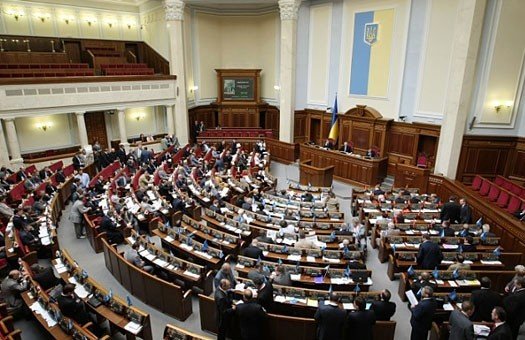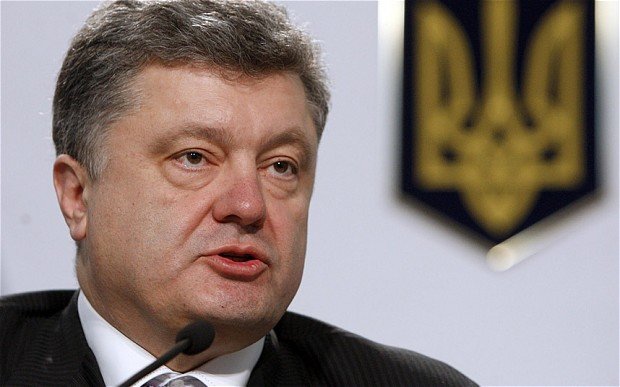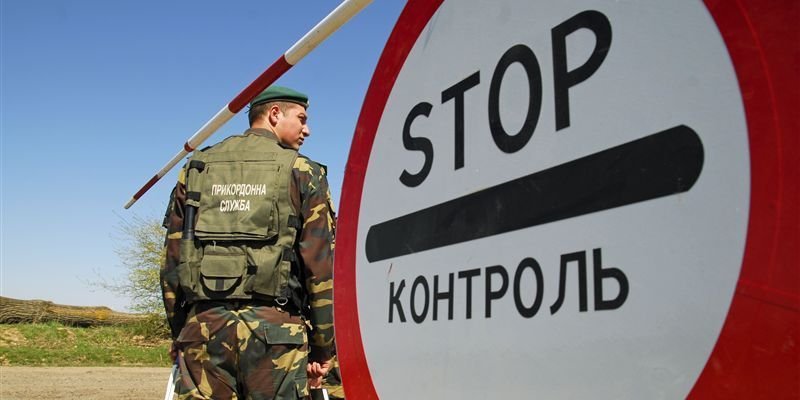The territory of the Autonomous Republic of Crimea has been occupied by the Russian Federation for more than two years. Tens of thousands of Ukrainian citizens called “internally displaced persons” on the mainland left the peninsula in this period. There are still hundreds of thousands of Ukrainian citizens, who did not overwhelmingly support the annexation of Crimea in 2014, on the occupied peninsula. A large variety of agencies, ranging from the Parliament and ending with the MIA service center, is involved in solving the issues of the occupied territory of Crimea and its inhabitants on both sides of the administrative border in Ukraine. However, Crimeans are not always satisfied with their work.
Crimea in Ukrainian Parliament
In spite of the fact that the Verkhovna Rada of Ukraine is regularly discussed the Crimean issue, the Parliament has adopted not so many documents related to the occupied peninsula for 2.5 years of occupation. First of all, it is a number of laws directly related to Crimea: the Law “On ensuring the rights and freedoms of citizens and the legal regime on the temporarily occupied territory of Ukraine” (of 15/04/2014) and the controversial Law “On the creation of the free economic zone “Crimea” and on the peculiarities of economic activities on the temporarily occupied territory of Ukraine” adopted on August 12, 2014. According to the first one, Ukraine has refused to recognize the occupational authorities of the peninsula and the documents issued by them. The second legal act established the FEZ regime in Crimea allowing the Ukrainian business to have economic relations with the occupied territory. But the most adverse consequence of the adoption of this law was the recognition of the Crimeans as non-residents of Ukraine that made the already difficult life of, firstly, those who left the peninsula even more complicated: they were denied to open bank accounts, issue salary cards and carry out other financial transactions.

To protect the rights of internally displaced persons not only from Crimea, but also from the Donbas, the Law “On ensuring the rights and freedoms of internally displaced persons” (October 20, 2014), according to which a special mechanism to register internally displaced persons (IDPs) on the territory under the Ukrainian control was introduced, was adopted. Getting an IDP certificate became a basis to obtain social payments and apply for some benefits.
The political act was the renaming of 70 localities and 5 districts of Crimea by the Rada within the framework of decommunization policy in 2016. Crimean cities and villages received back mainly their Crimean Tatar names. However, it will be possible to implement “the triumph of historical justice” in practice only after the return of Ukrainian sovereignty over the territory, as stated in the relevant Resolution #4087.
The Rada has made several political statements related to Crimea and the Crimean people during the whole period of occupation. Most of them were related to the status and rights of the Crimean Tatar people. For example, in March 2014, Ukrainian MPs adopted a statement, in which they recognized the Crimean Tatar people as an indigenous group of Crimea. However, people’s deputies still can’t go ahead and adopt the law on indigenous groups. In December 2015, the Rada recognized the deportation of 1944 as the genocide of the Crimean Tatar people.

People’s Deputy of Ukraine, head of the Mejlis of Crimean Tatar people Refat Chubarov at the rostrum of the Verkhovna Rada of Ukraine
The Crimean issue has been also reflected in international appeals of the Verkhovna Rada. In particular, on April 1, 2016, the Verkhovna Rada of Ukraine called upon the international community to condemn the ban of the Mejlis in Russia, and in May, it appealed to international organizations, world leaders and the international community to recognize the policy of the Russian Federation regarding the Crimean Tatars as the ethnocide. One of the last Rada’s statements was an appeal to the parliaments of the world to refuse recognizing the elections to the Russian State Duma, which were held on the territory of occupied Crimea, as legal elections.
The President of Ukraine and Crimea
Probably, in most cases, the President of Ukraine is speaking about Crimea by raising the annexation issue in multilateral summits and bilateral meetings, at the UN conferences or during discussions with the EU leaders. However, the Petro Poroshenko’s message is always clear: Crimea is the territory of Ukraine and Kiev will restore its sovereignty over the peninsula eventually.
“A year after, Crimea is Ukraine. This is our responsibility, together with the rest of the world – to overcome the injustice de facto forcing the aggressor to leave the field de jure. Crimea will eventually return to where it should be and our common task – to achieve this as soon as possible, in the name of respect for the rights of our citizens, international law and for the sake of peace in the world,” Poroshenko wrote in The Wall Street Journal newspaper in March 2015, the first anniversary of Crimean annexation.
One of the major topics of the Ukrainian President’s public speaking about Crimea was the issue of human rights violations on the occupied peninsula and, first and foremost, the issue of Crimean Tatar people. The Ukrainian President repeatedly stated about changing the status of Crimea in the interests of the peninsula’s indigenous group.

“We have the issue of the return of Crimea as well as the deoccupation of the Donbas on our agenda. Once again, I emphasize that we must start the process of making changes and amendments to the section 10 of the Constitution of Ukraine, which is called “The Autonomous Republic of Crimea”. These changes are fully resulting from the inalienable right of the Crimean Tatar people to self-determination as part of the sovereign and independent Ukrainian state. Of course, it goes without saying, along with the full guaranteeing of equal rights and civil liberties for ethnic Ukrainians, Russians and other ethnic groups of the peninsula,” Poroshenko said in June 2016 while speaking at the ceremonial meeting of the Verkhovna Rada on Constitution Day of Ukraine.
The Presidential Representative’s office in the Autonomous Republic of Crimea was located in Simferopol before the annexation. In May 2016, the activity of this body was resumed in mainland Ukraine – in Kherson. In the meantime, Natalya Popovich was appointed a Permanent Representative of the President and she has served in this position to this day.
Crimea in the activity of the Cabinet of Ministers
The Crimean issue delivers the most of troubles to the Cabinet of Ministers, which has been forced to solve the issues of interaction with the occupied peninsula as well as deal with the problems of internally displaced persons since the first days.
There are two important Resolutions that can be identified among main documents adopted by the Ukrainian government: the Resolution #367 (“Procedure for entering and exit from the temporarily occupied territory” of June 4, 2015) and the Resolution #1035 (“On Restriction of supply of certain goods (works, services) from the temporarily occupied territory to another territory of Ukraine, and/or from another territory of Ukraine to the temporarily occupied territory” of December 16, 2015).

The first document allows to enter the territory of occupied Crimea only through the checkpoints on the administrative border between the peninsula and the Kherson region, and introduces a procedure for obtaining special permits for entering for foreign citizens. The Resolution #1035 regulates the import / export of goods to Crimea and from it. This document of the Cabinet of Ministers was the most heavily criticized by human rights activists and ordinary citizens, who were allowed to take out only a minimal set, conventionally referred to as “personal belongings” from the temporarily occupied Crimea. It is especially difficult for those who decided to leave Crimea and move to the mainland – the removal of furniture or household appliances turns into an unsolvable problem for them.
The Foreign Ministry, Ministry of Social Policy and the new agency – the Ministry of Temporarily Occupied Territories and Internally Displaced Persons (IDPs) face with the Crimean issues more often than other Ukrainian ministries.
The main task of the Ministry of Foreign Affairs regarding the Crimean issue – a reaction to the events occurring on the peninsula that violate the international and Ukrainian law. Visits of Russian leaders in Crimea, so called elections in the State Duma held by the Kremlin on the occupied peninsula or the visits of foreigners to the Ukrainian territory in violation of the Ukrainian legislation are among these violations. The Ministry of Foreign Affairs issues a statement on each of these cases. In addition, the foreign ministry voiced human rights violations, which, unfortunately, have become the rule rather than the exception, in occupied Crimea.
The Ministry of Social Policy is focused on the problems of providing the IDPs with social benefits. According to recent data, there are 22,637 displaced people from Crimea in Ukraine, although, in fact, this number is much larger, since the Ministry of Social Policy takes into account only those who have received a displaced person’s certificate and registered himself.
In 2016, a new system of paying social allowances, which requires from an IDP not only to be registered, but also to pass a special inspection regarding his permanent residence at the place of registration, was introduced in Ukraine. If the fact of residence is not confirmed, a displaced person will be refused in getting social allowances.

The Ministry of Education of Ukraine has developed a program of privileged admission to institutes of higher education in mainland Ukraine for Crimean students. 10 higher education institutions in different regions of the country accepted Crimean students on the basis of one entrance exam – in history of Ukraine or in mathematics. A schedule of additional testing sessions was made for those who wanted to go to other universities of Ukraine on the basis of the external independent testing and Ukrainian language lessons were conduced online. Also, a distance course system for pupils from occupied territories is introduced in Ukraine.
The Ministry of Temporarily Occupied Territories and Internally Displaced Persons was formed in April of 2016 by merging two agencies – the State Agency for Donbas Restoration and the State Service on issues of the Autonomous Republic of Crimea and Sevastopol. Vadym Chernysh previously headed the State Agency for Donbas issues headed the new ministry.
According to the Regulation on the Ministry approved by the Cabinet of Ministers on June 8, 2016, a main task of the agency is to form and implement a state policy aimed at the reintegration of the Autonomous Republic of Crimea, Sevastopol and certain areas of Donetsk and Lugansk regions in a “single constitutional environment of Ukraine”. Vadym Chernysh narrowed a voluminous phrase to three clear areas of work – the policy regarding the occupied territories, building a peaceful life (for the Donbas – Ed.) and IDPs. However, the agency can’t boast of a significant success over six months of its existence as well as the State Service for Crimean issues, which has existed earlier and been inactive for two years.
Click here to continue reading












